Abstract
Samples of wheat naturally infected by Fusarium graminearum Schwabe were obtained from mills in Oklahoma, Missouri, Kansas, and Minnesota and fields in Nebraska and Kansas in 1982; they were analyzed for deoxynivalenol (DON). The wheat was milled, and DON was found throughout all the milling fractions (bran, shorts, reduction flour, and break flour). The DON recoveries for each mill run ranged from 90 to 98%. These samples, regardless of DON concentration, also gave similar fractional distributions of DON. The greatest (21 ppm [21 micrograms/g]) concentration of DON was found in the bran, and the smallest (1 ppm) was found in the break flour. Cleaning and milling were not effective in removing DON; DON was not destroyed in the bread baked from the naturally contaminated whole wheat flour, but the effect on its concentration in the samples analyzed varied, the reduction ranging from 19 to 69%. The percent reduction found in the cleaned wheat ranged from 6 to 19%. DON concentrations in the following commercially made breads, caraway rye, seedless rye, and pumpernickel, were 45 ppb (ng/g), 39 ppb, and 0 ppb, respectively. The limits of detection by gas chromatography-mass spectrometry and high-pressure liquid chromatography for DON were 0.5 and 10 ng, respectively.
Full text
PDF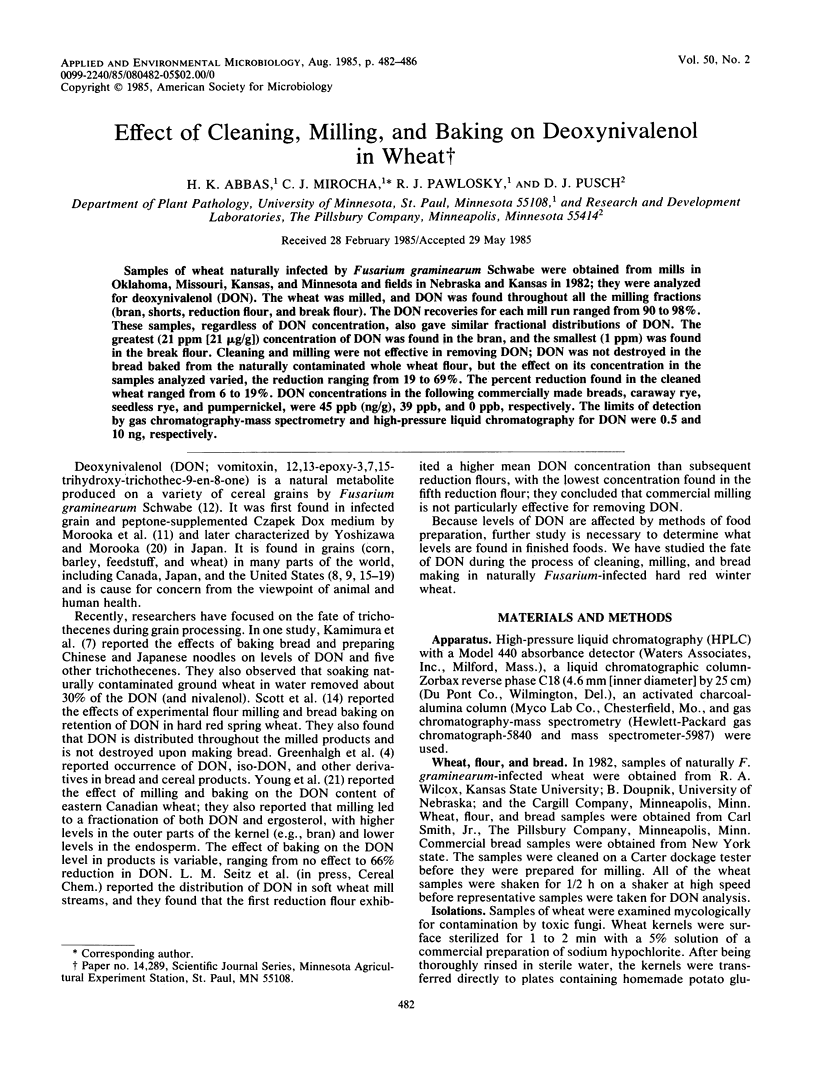
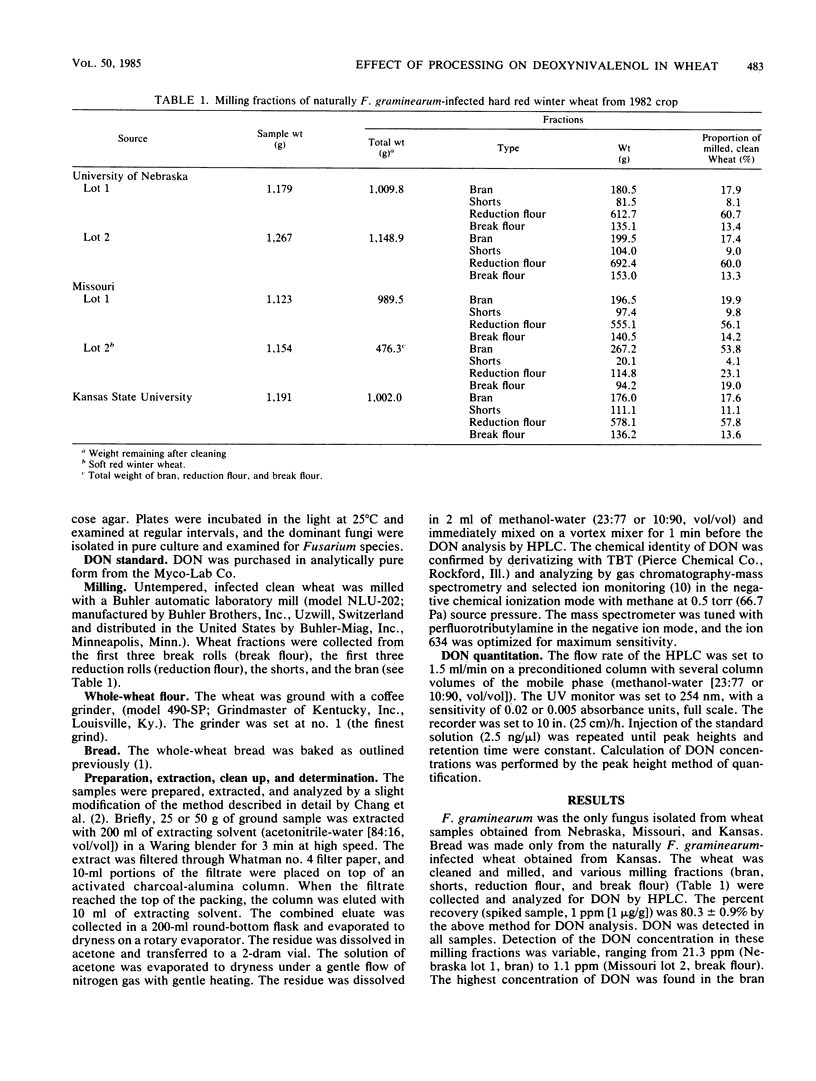
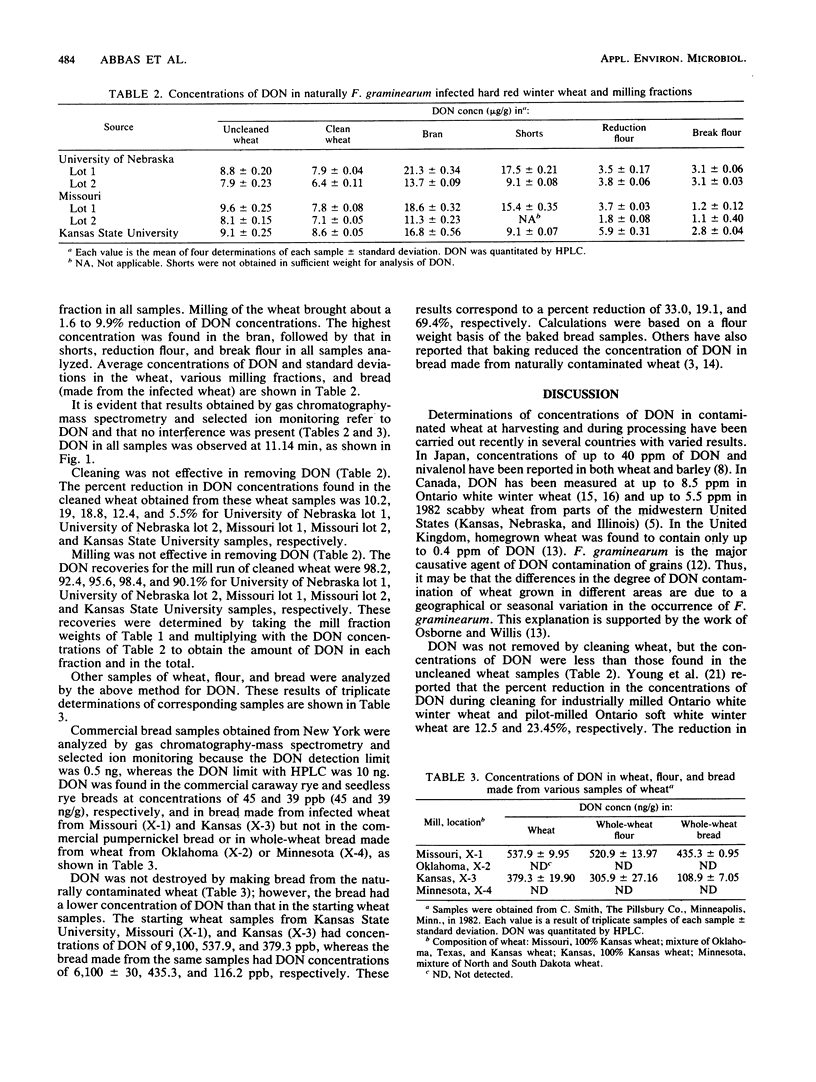
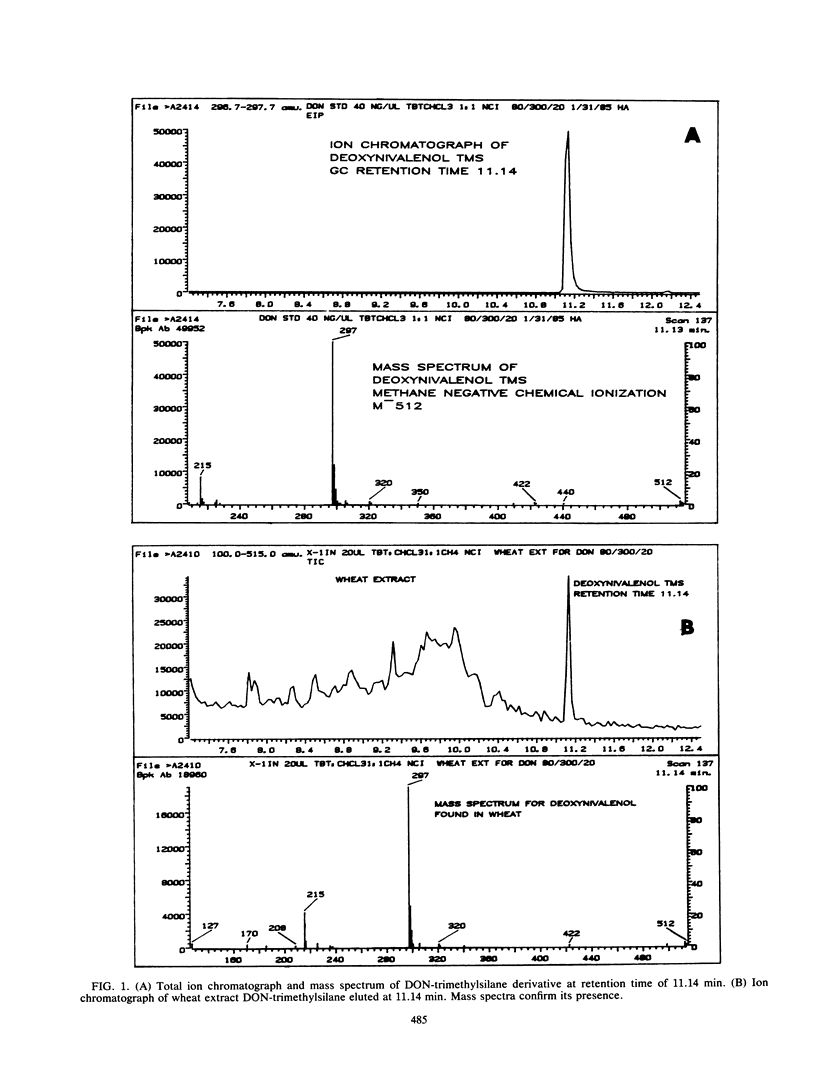
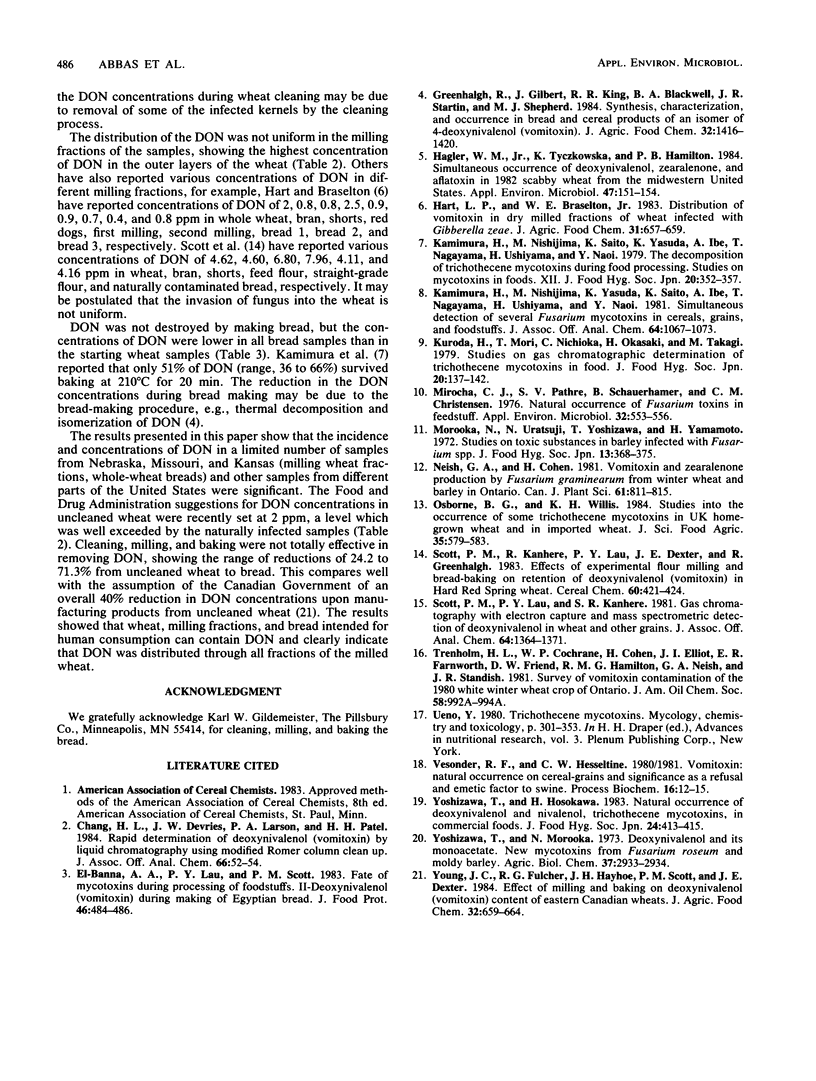
Selected References
These references are in PubMed. This may not be the complete list of references from this article.
- Chang H. L., DeVries J. W., Larson P. A., Patel H. H. Rapid determination of deoxynivalenol (vomitoxin) by liquid chromatography using modified Romer column cleanup. J Assoc Off Anal Chem. 1984 Jan-Feb;67(1):52–54. [PubMed] [Google Scholar]
- Hagler W. M., Jr, Tyczkowska K., Hamilton P. B. Simultaneous occurrence of deoxynivalenol, zearalenone, and aflatoxin in 1982 scabby wheat from the midwestern United States. Appl Environ Microbiol. 1984 Jan;47(1):151–154. doi: 10.1128/aem.47.1.151-154.1984. [DOI] [PMC free article] [PubMed] [Google Scholar]
- Hart L. P., Braselton W. E., Jr Distribution of vomitoxin in dry milled fractions of wheat infected with Gibberella zeae. J Agric Food Chem. 1983 May-Jun;31(3):657–659. doi: 10.1021/jf00117a046. [DOI] [PubMed] [Google Scholar]
- Kamimura H., Nishijima M., Yasuda K., Saito K., Ibe A., Nagayama T., Ushiyama H., Naoi Y. Simultaneous detection of several Fusarium mycotoxins in cereals, grains, and foodstuffs. J Assoc Off Anal Chem. 1981 Sep;64(5):1067–1073. [PubMed] [Google Scholar]
- Mirocha C. J., Pathre S. V., Schauerhamer B., Christensen C. M. Natural occurrence of Fusarium toxins in feedstuff. Appl Environ Microbiol. 1976 Oct;32(4):553–556. doi: 10.1128/aem.32.4.553-556.1976. [DOI] [PMC free article] [PubMed] [Google Scholar]
- Scott P. M., Lau P. Y., Kanhere S. R. Gas chromatography with electron capture and mass spectrometric detection of deoxynivalenol in wheat and other grains. J Assoc Off Anal Chem. 1981 Nov;64(6):1364–1371. [PubMed] [Google Scholar]


